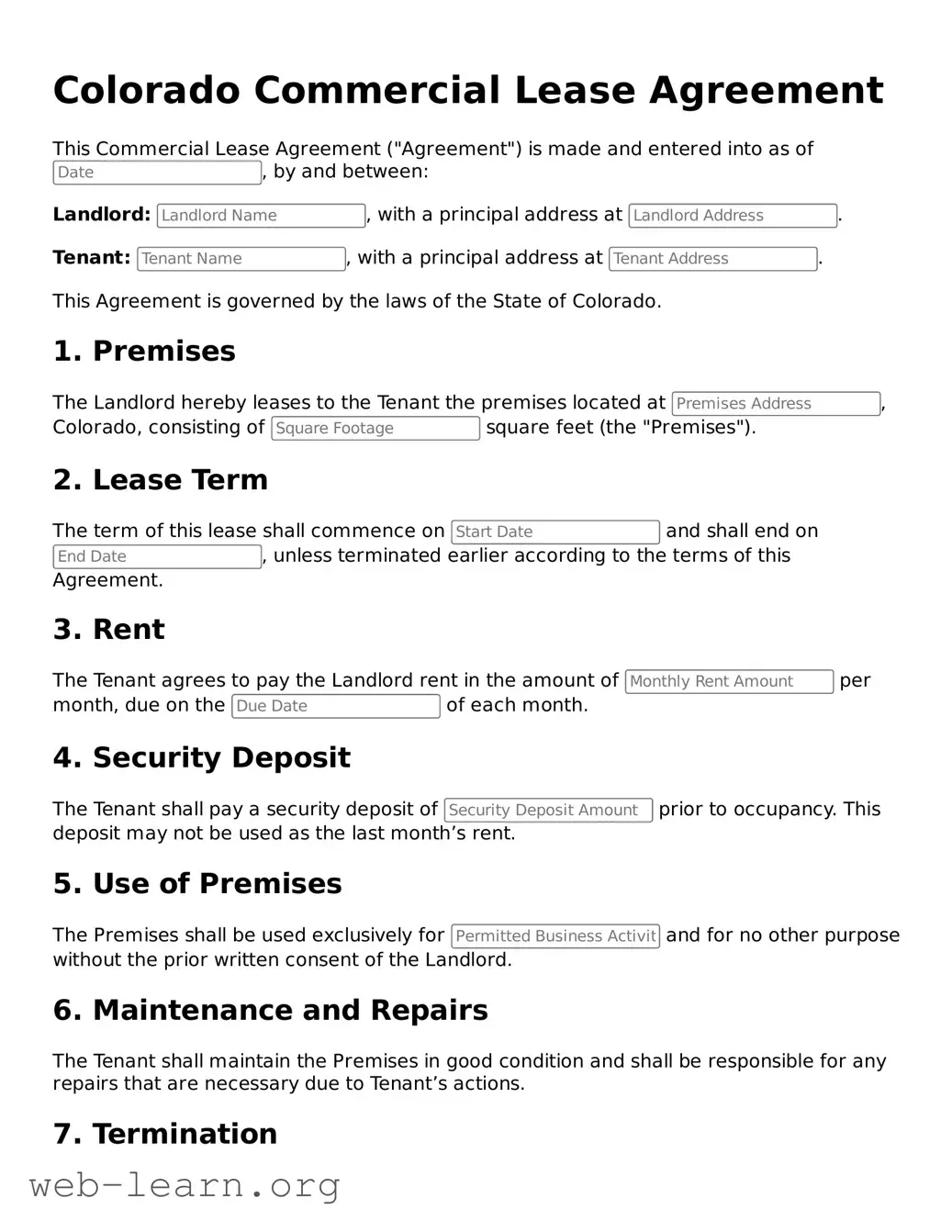Attorney-Approved Commercial Lease Agreement Document for the State of Colorado
A Colorado Commercial Lease Agreement is a legally binding document that outlines the terms and conditions between a landlord and a tenant for renting commercial property. This agreement defines the rights and responsibilities of both parties, ensuring a clear understanding from the start. Whether you are a business owner or a property manager, knowing the details of this form is essential for a smooth leasing process.
